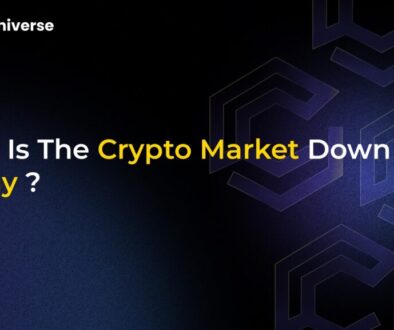FTX Cryptocurrency Exchange Faces Scrutiny Over $2.2 Billion in Disputed Claims

The saga of FTX, the bankrupt cryptocurrency exchange, continues to unfold, drawing significant attention as it navigates the complex process of repaying its vast number of creditors. While the FTX Recovery Trust has initiated a crucial second round of payments, distributing over $5 billion in digital assets, a substantial hurdle remains: approximately $2.2 billion in repayments are still caught in a web of disputed claims.
This ongoing situation puts FTX under increased scrutiny, as users and the wider crypto community push for clarity and resolution. The estate holds a significant $6.5 billion in reserves specifically for these contested claims, but the path to full resolution is fraught with challenges, including persistent Know Your Customer (KYC) verification issues and uncertainty surrounding specific claim types, such as those originating from China. The resolution of these claims is not just about financial recovery for individuals; it could also significantly impact sentiment and liquidity across the broader cryptocurrency market.
Second Round of Payouts Brings Relief, But Not For All
In a much-anticipated move, FTX initiated a second round of payments, beginning on May 30, 2025, distributing a staggering $5 billion to eligible creditors. This significant payout aims to provide much-needed relief to those who suffered losses during the exchange’s dramatic collapse. The distribution covers both Convenience and Non-Convenience Classes, specifically targeting claims larger than those addressed in the initial repayment phase.
To ensure a smooth reception of their funds, creditors must complete several mandatory steps via the FTX Customer Portal. Approved distribution agents, including industry giants like BitGo and Kraken, are actively contacting clients to facilitate the disbursement of funds. It’s crucial for creditors to act diligently, as failure to select a distribution service provider within six months of the distribution record date, or neglect in submitting required tax forms, could unfortunately lead to the forfeiture of their rightful distribution. For those fortunate enough to be included in this round, recovery rates are promising, ranging from 54% to an impressive 120% of their original claim value, a testament to the recovery efforts.
Eligibility and Process for Creditors
- Creditors must access the FTX Customer Portal to complete necessary steps.
- Approved distribution agents (e.g., BitGo, Kraken) are contacting clients for fund confirmation.
- Timely selection of a distribution service provider is critical.
- Submission of required tax forms is mandatory to avoid forfeiture.
The Sticking Point: Disputed Claims and KYC Headaches
Despite the positive momentum from the second round of payouts, a significant portion of FTX’s repayment efforts is currently stalled by approximately $2.2 billion in disputed claims. These unresolved claims, coupled with widespread Know Your Customer (KYC) verification issues, underscore the persistent and complex challenges within FTX’s bankruptcy proceedings.
A major contributor to this backlog is the failure of numerous creditors to complete mandatory KYC verification before the stipulated deadline. This oversight led to the disqualification of nearly 392,000 customer claims, amounting to an estimated $2.5 billion. While these disqualifications might, paradoxically, improve recovery rates for the remaining verified FTX creditors, they simultaneously highlight critical gaps in FTX’s global repayment strategy and create a bottleneck for a substantial number of affected individuals.
The FTX estate has set aside a considerable $6.5 billion in reserves specifically to address these disputed claims, demonstrating the recognition of their complexity and the need for dedicated resources. However, the path to resolving these claims, particularly those affected by KYC hurdles, remains unclear for many. The sheer volume of disqualified claims, almost 400,000, indicates a systemic issue that extends beyond individual oversight, pointing to potential communication or accessibility challenges in the KYC process itself.
Key Issues Leading to Disputed Claims:
- KYC Verification Failures: A significant number of claims were disqualified due to incomplete or missed KYC requirements.
- Uncertainty Over Chinese Claims: Specific issues persist regarding claims originating from China, adding to the complexity.
- Operational Bottlenecks: The sheer scale of claims and the administrative burden contribute to delays.
- Legal Complexities: Various legal interpretations and challenges can arise with large-scale bankruptcies.
Broader Market Impact and the Road Ahead
The resolution of FTX’s outstanding claims carries significant weight beyond just the individual creditors. A clear and comprehensive settlement could provide a much-needed boost to sentiment across the entire cryptocurrency market, potentially injecting liquidity and restoring a degree of confidence that was severely shaken by FTX’s collapse. Conversely, prolonged uncertainty and unresolved disputes could continue to cast a shadow, hindering broader market recovery and adoption.
In an effort to streamline payment distribution, FTX recently partnered with Payoneer, a well-known financial services company. This partnership is specifically aimed at assisting with retail customer payouts, hoping to alleviate some of the distribution challenges and accelerate the process for smaller creditors. However, even with such partnerships, the complexity of addressing nearly $2.2 billion in disputed claims, many tangled in KYC issues, means the situation remains highly intricate.
The ongoing efforts to address these outstanding claims and provide clarity on repayment timelines are crucial. The crypto community, regulators, and affected individuals are keenly watching, hoping for a definitive resolution that can finally close this painful chapter and allow the market to move forward with renewed trust and stability.
Conclusion
FTX’s journey through bankruptcy is a stark reminder of the complexities and risks inherent in the rapidly evolving crypto landscape. While the second round of payouts offers a glimmer of hope for many, the substantial volume of disputed claims, largely due to KYC issues, presents a formidable challenge. The resolution of these claims is paramount, not only for the financial well-being of hundreds of thousands of creditors but also for the broader health and perception of the cryptocurrency market. As efforts continue to untangle these complexities, the focus remains on achieving a fair and transparent outcome for all involved.


